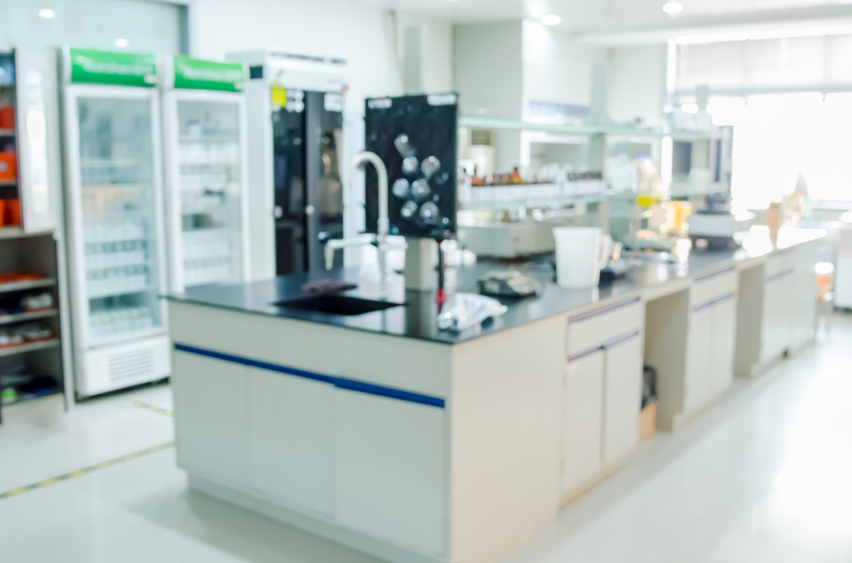
|
Here’s what you can do to protect workers from the physical and safety hazards found in the lab.
Physical Hazards
Physical hazards commonly found in laboratories include ergonomic hazards, ionizing radiation, nonionizing radiation, and noise.
Employers must make an effort to identify and protect workers against ergonomic hazards they can encounter in the lab, including pipetting, working at microscopes, operating microtomes, using cell counters, and keyboarding at computer workstations.
To protect workers against ionizing radiation, any laboratory possessing or using radioactive isotopes must be licensed by the Nuclear Regulatory Commission.
Nonionizing radiation includes the spectrum of ultraviolet (UV), visible light, infrared (IR), microwave, radio frequency, and extremely low frequency radiation. Lasers commonly operate in the UV, visible, and IR frequencies.
Noise in laboratories can be generated by large analyzers, fume hoods, biological safety cabinets, incubators, centrifuges, cell washers, sonicators, stirrer motors, fans and compressors for cryostats, refrigerators, refrigerated centrifuges, and freezers. Whenever noise levels in the laboratory reach or exceed the 8-hour time-weighted average action level of 85 A-weighted decibels (dBAs), employers must implement a hearing conservation program, as required by 29 CFR 1910.95, Occupational Noise Exposure.
Safety Hazards
Lab workers can face safety hazards posed by autoclaves and sterilizers, compressed gases, centrifuges, cryogens, and dry ice. Electrical and fire hazards occur in laboratories as well.
Autoclaves and sterilizers pose burn and cut hazards. Workers should be provided with oven mitts and training in safe work practices to deal with these hazards.
Compressed gases can be toxic, flammable, oxidizing, or corrosive; even an inert compressed gas can pose a hazard if it displaces oxygen. Compressed gases in cylinders pose hazards because of their weight and pressurized state. A cylinder that falls over can cause crushing injuries; if its valve is broken off, the cylinder can become a missile. Compressed gases must be included in the laboratory’s chemical hygiene plan.
Unbalanced centrifuge rotors can cause serious injuries or death. If the sample containers in the centrifuge break, workers may be exposed to harmful aerosols. Training in safe work practices that apply to centrifuges is essential to preventing these injuries.
Cryogen and dry ice hazards fall into three categories: asphyxiation, frostbite, and explosion. Employees who work with cryogens—chemicals that are stored at extremely low temperatures, in extremely condensed form—must wear appropriate personal protective equipment and follow safe work practices.
All laboratory workers must be aware of basic electrical safety practices, including lockout/tagout and fire prevention measures and fire response.
Do you need more in-depth information on any of these topics? Safety.BLR.com® will help ensure you’re never in over your head.
